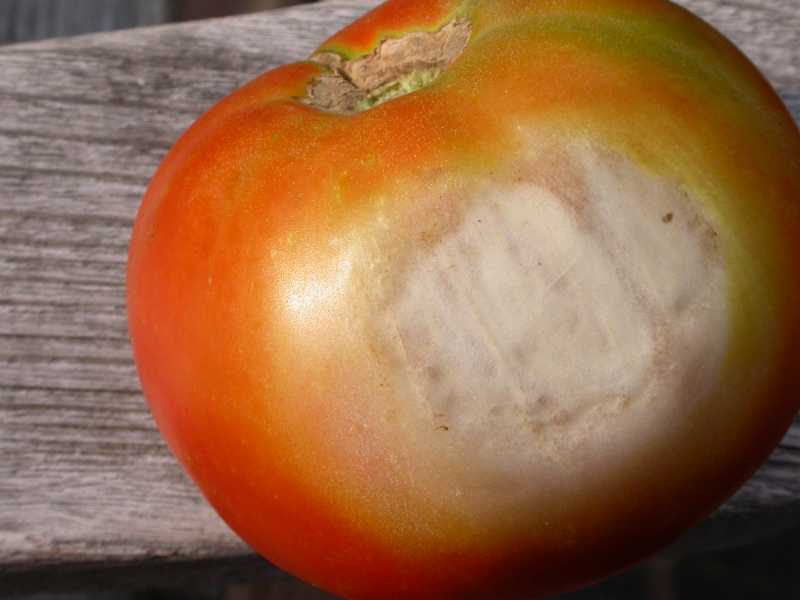How to avoid the 7 deadly sins of growing tomatoes
05/25/2016 / By usafeaturesmedia

(Homesteading.news) Just about everyone loves fresh garden produce, especially when it is coming from your garden, and one of the most popular fruits and veggies produced in home gardens is the tomato. Why? Because they are easy to grow and there are a variety of species from which to choose.
That said, there certainly are some pitfalls to deal with when growing tomatoes, and if you’re not careful, they will not only ruin your harvest but may also keep you from growing these delicious, all-purpose crops in the future.
As noted by The Gardening Channel, there are “seven deadly sins” associated with growing tomatoes, though each of them can be mitigated with proper care and attention. They are:
- Blossom-end rot: This manifests as a dark patch on the blossom-end of the fruit that will turn black and leathery over time. The cause – a calcium deficiency in the tomato. This happens if the weather is too cold or too hot and water supply is not consistent. Avoid it: Plant your tomatoes at the appropriate time – not too early in the season. Also, water and fertilize them evenly and consider using some mulch, which will hold water and even out the supply to the plant.

Image credit: Mahoney’s Garden Center
- Phosphorus deficiency: Soil generally contains plenty of phosphorus but it won’t become available to tomato plants in cooler temperatures; a lack of phosphorus can kill the plant. Avoid it: Again, don’t plant too early. That that will mean depends on where you live (climate) but the soil must be warm when tomatoes are planted. Mulch will help to warm your soil as well.
The power of the elements: Discover Colloidal Silver Mouthwash with quality, natural ingredients like Sangre de Drago sap, black walnut hulls, menthol crystals and more. Zero artificial sweeteners, colors or alcohol. Learn more at the Health Ranger Store and help support this news site.
- Catfacing: This refers to holes and scars at the blossom end of the fruit that make it ugly and often unusable. Larger varieties are more susceptible to this than smaller varieties. While the cause is not entirely known, some experts believe it is a disturbance of the flowers or flower buds during their development – cold weather, high nitrogen levels in the soil, contact with certain herbicides, etc. Avoid it: Avoid planting when it’s too cold (see a trend here?) and just know that certain varieties of tomato are just more prone to catfacing than others; if you have this problem, choose a different variety.

Image credit: Canadian government
- Growth cracks: Cracks that appear as the fruit grows – pretty simple. Often the cracks are invaded by bacteria and fungi, which of course ruins the fruit. Cracks result from very rapid growth often brought on by environmental conditions, such as when water becomes very abundant after a drought. Avoid it: Consistent watering will mitigate rapid growth and help prevent cracking of the fruit. Mulch helps keep moisture consistent. Just know that some varieties are more prone to cracking.

Image credit: Tomato Headquarters
- Sunscald: As the description implies, this is a discoloration of the fruit that happens after too much exposure to the sun. It is a white or pale or yellowish spot where the sun hits the fruit most directly. Avoid it: Don’t over-prune and if need be, shade your plants to reduce exposure to the sun.

Image credit: Missouri Botanical Garden
- Herbicide injury: Tomato plants can be easily injured by hormone-type weed control herbicides. You might use these on your lawn to control dandelions and/or clover; the spray could drift over to your tomato plants or grass clippings that contain the herbicide could find their way into your tomato patch. Avoid it: Keep all herbicides away from your plants and, again, consider some organic weed (and pest) control so this won’t be an issue. If you do use a chemical brand, just be careful not to get it on your tomatoes.
- Soil rot: A few different types of fungi can form in your soil that will infect your tomatoes. Warm, moist environments are those in which fungus grows more easily. Also, if your soil does not drain properly and remains overly moist, your tomatoes are in danger of fungi infection. Avoid it: Don’t let your tomatoes touch the soil, for one thing. Make sure you don’t over-water them and that the soil can drain properly. An easy fix is to stake your tomatoes or surround them with growth cages. Mulching with organic matter will also keep a layer between your tomatoes and the soil. Finally, rotate where you plant your tomatoes, planting in the same spot only once every three years.
More:
- Keep those pesky pests out of your garden safely and above all, naturally
- These non-toxic garden remedies will have your plants healthy and producing like champs
- Use these fantastic organic fertilizers to grow a grander garden
Homesteading.news is part of the USA Features Media network. Check ALL our daily headlines here.





















